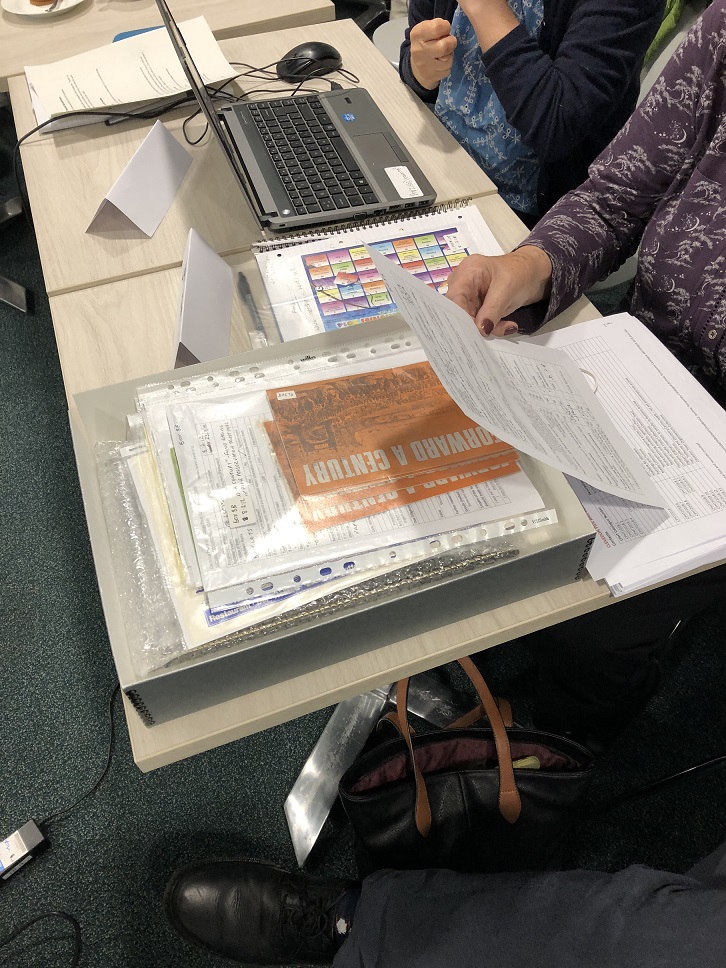
I will never forget my very first experience of working in an archive and feeling the excitement at cataloguing a small collection into CALM and then seeing the finished description online. If I wasn’t already pretty set on my future career path, that settled it for me; I was hooked and ready for more. Working with archives is an immense privilege and whilst I will always get slightly giddy at seeing original, historic documents, providing access to these collections through arranging and describing them has been a primary driver throughout my career. I don’t just want to experience the awe of them for myself; I want the widest possible audience to know they exist and that they are there for use and research.
Although I no longer work with collections directly anymore, I am still just as passionate about providing access to collections through description and happily get to continue this work in my current role as Digital Development Officer at The National Archives. Working in the Archives Sector Development department, I help to facilitate access to and support for our web-based collections publishing tool, Manage Your Collections (MYC). Launched in 2017 and used by over 230 archives so far, MYC allows archives the ability to add their collection descriptions to Discovery, a union catalogue of The National Archives and other UK archives, which comprises over 33 million record descriptions (one-third of those from UK archives). Discovery gets on average 20,000 hits a day from researchers and so by adding collection descriptions to Discovery, exposure to collections is amplified to an international audience.

The digital age we find ourselves in today, with information seemingly at our fingertips, is a real boon for archives. Collections information can be published in online catalogues, archive services can be found on YouTube and Instagram, and Archives Twitter is the reason why I haven’t yet deleted my account. The content is just too enticing – the Sainsbury’s Archive recent 1980 Yoghurt World Cup being just one example. However, although there’s a lot we see, I am also very aware of what we don’t see. There are many, many archives out there who don’t have any way to get their collection descriptions online due to resourcing – money, time and people are all constraints on the work that archives, particularly community archives, can undertake.
This, however, is where I see MYC being of particular benefit to community archives. Over the last couple of years as we have rolled MYC out, we have had opportunities to work with some community archives, to learn about the challenges they face and the obstacles they need to overcome to be able to publish collections online. We’ve been able to shape guidance, like our Cataloguing archive collections webpage, where we introduce what archival cataloguing looks like to those dedicated volunteers who find themselves at the helm of caring for community collections without formal training in archival management. We have also developed training in how to describe collections and how to apply that knowledge in order to use MYC. Happily, we have also been able to celebrate with community archives as they have published collections to Discovery, including a recent addition of the Spratton Local History Collection.
It can feel overwhelming thinking about how we can take boxes on shelves and turn them into neat descriptions, particularly as ISAD(G), the international cataloguing standard for archives, can seem like learning a new language to the uninitiated. To help demystify the process a little and to give real world examples from community-based organisations who use MYC, we have published case studies showing how each archive has developed processes for describing and publishing their collections online for the very first time.
Collections that reside with community and heritage groups have just as much use and research potential as those that reside in larger, better-resourced archives. Discovery has the potential to surface marginalised voices and histories and to allow us to build a more representative national narrative than any single catalogue could do on its own. If we want to reach more and diverse audiences, we need people to know archives exist. One of the fundamental drivers of this connectivity is access to resources that will enable the provision of online access to collections. MYC and Discovery can play a key role in this by providing a platform that is free to use and that allows archives to take full control of their content. What’s more, MYC provides the training and support needed for community archives to feel like they can confidently tackle the task.
For more information about MYC, please feel free to hop on over to our webpages or email us at manageyourcollections@nationalarchives.gov.uk.
Caroline Catchpole, Digital Development Officer

